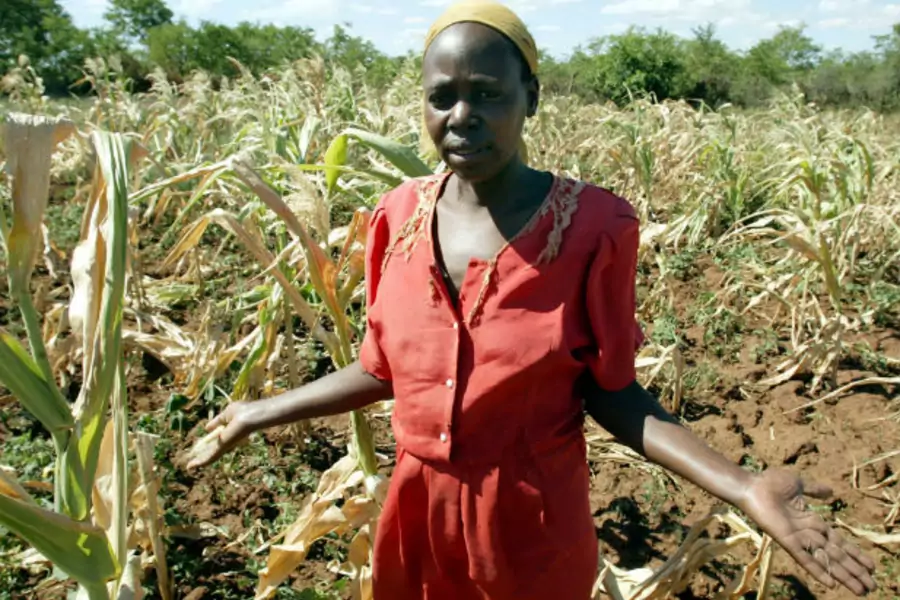Zimbabwe and several other Southern African countries are expected to suffer drought conditions in the annual rain season from October 2023 to April 2024, which coincides with the regional summer cropping season, according weather scientists. The forecast drought conditions are traced to a weather pattern called El Niño, which has traditionally badly affected farming production in Zimbabwe.
What is El Niño?
El Niño refers to a cycle of warming and cooling events that happens along the equator in the Pacific Ocean leading to an increase in sea surface temperatures across the Pacific. The warming phase of the phenomenon called El Niño Southern Oscillation (ENSO) stimulates drought conditions. ENSO creates both dry and hot conditions that negatively affect food crops. The cooling part of the cycle is called La Niña and has the opposite effect.
What have the experts said?
The World Meteorological Organization (WMO) says that El Niño conditions have developed in the tropical Pacific for the first time in seven years, setting the stage for a likely surge in global temperatures and disruptive weather and climate patterns. The WMO statement came on the eve of Zimbabwe’s summer cropping season.
What is the general impact of El Niño?
- It causes drought and heatwaves, affects water supply for domestic, animal and industrial use and hits farming output for rain-fed agriculture.
- The El Niño poses a threat to the agricultural livelihoods of millions of people globally. In Southern Africa and Zimbabwe in particular, the impacts of El Niño have been felt across all sectors affecting the most vulnerable communities.
What are the main features of El Niño?
- El Niño and La Niña events happen every two to seven years, on average, but they don’t occur on a regular schedule.
- They usually last for 9-12 months but have been known to last for several years at a time.
- El Niño affects weather and storm patterns in different parts of the world.
- El Nino come in different varieties (no two El Niño events are exactly alike in intensity)
Has El Nino hit Zimbabwe before and with what impact?
In February 2016, former Zimbabwe President Robert Mugabe declared “ A state of disaster” following a drought triggered by El Niño, which left 2.44 million people struggling for food. The following was the recorded impact:
- Some 75 percent of Zimbabwe received less than normal rainfall.
- Severe livestock deaths – 17,000 were recorded in 2016.
- Crop failure, yield reduction leading to drought.
- Grain shortfall of 1.5 million tonnes.
- Increased household food insecurity as a result of loss of income. At least 70 percent of food production depends on peasant agriculture, with a majority of farmers in this category having no access to water for irrigation purposes.
- Outbreak of water borne diseases as people access water from insecure sources.
- Deepening poverty.
What can stakeholders do to mitigate the impact of El Niño?
- Immediately commit resources to fund early action.
- Initiate collaborative action between private and public actors to mitigate the socio-economic and environmental risk posed by El Niño.
- Facilitate awareness campaigns to educate the public on the strategies to mitigate the impact of El Niño.
- Stepping up investment in resilience building for sustainable rural agriculture in Southern Africa.
- Upscaling social protection, adopting SMART agriculture techniques, climate change mitigation through smart livelihoods options, and management of natural resources.
- The rural communities should make use of indigenous knowledge to enhance and ensure crop and livestock production.
- Put in place resilient water management systems.
- Put vulnerable groups at the centre of the design and implementation of anticipatory action.
What can farmers do to cope during El Niño?
- Learn modern agricultural practices.
- Use drought resistent varieties.
- Do due diligence by seeking expert advice on the best crop choice to plant during El Niño.
Sources
World Meteorological Organisation
https://public.wmo.int/en/media/press-release/world-meteorological-organization-declares-onset-of-el-ni%C3%B1o-conditions
International Federation of Red Cross And Red Crescent Societies
Oxfam
Initiatives to boost resilience towards El Niño in Zimbabwe’s rural communities
https://reliefweb.int/organization/ifrc
Related Content
Do you want to use our content? Click Here












